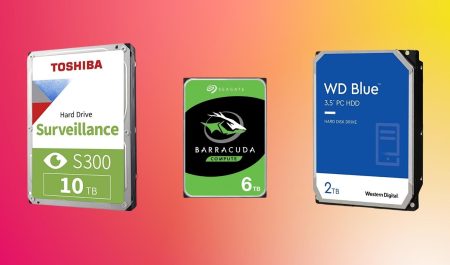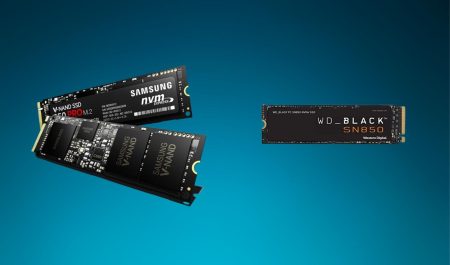In this guide, we will take a look at some of the key specifications for a hard drive when considering an HDD for data storage, editing, servers, NAS builds or looking for reliable backup storage.
For many years, hard disk drives (HDD) have been the standard storage option for PCs and servers. They are a popular option for data storage and backups because they provide an affordable solution to store significant volumes of data. HDDs are still a crucial part of many system backups nowadays even if they are less common for daily usage due to the development of Solid State Drives (SSDs).
Specification for Hard Drive
Knowing these specifications will help you make an informed decision and ensure that you get a high-performing and reliable drive that meets your needs.
Form Factor
Hard drives come in different form factors, such as 3.5″ and 2.5″, which determine the physical size and shape of the drive. Make sure to check the form factor compatibility with your computer or server. The 2.5-inch dimension is ideal for increasing the internal storage in laptops and can work as an external drive, whereas the 3.5-inch size is typical for desktop computers.
Capacity
Hard drives come in a range of capacities, from a few hundred GBs to several TBs. If you’re planning to use the hard drive for large-scale data storage or backups, a higher-capacity drive will be more suitable.
Interface
SATA or SAS interfaces are used to connect hard drives to computers. However, you should be aware that SAS is not common, and that only the SATA interface is the popular type, which is compatible with all current-generation HDDs.
The third-generation SATA interface offers a 6Gb/s connection and has a bandwidth throughput of 600MB/s at maximum and is the most recent version that is supported by current-gen PCs, whereas SAS is often used in business applications and provides faster data transmission speeds.
Spindle Speed
The spindle speed of a hard drive is measured in RPM (revolutions per minute) and determines how quickly the drive can access data. Higher RPM drives generally offer faster performance, but also consume more power. Usually, 5400 and 7200 RPM, is the common frequency whereas Hybrid drives can spin from 1200 RPM to 1500 RPM.
Cache
Hard drives have built-in memory known as cache, which is used to temporarily store data for faster access. A higher cache capacity can result in improved performance.
Error Correction
Hard drives come with different levels of error correction. Look for hard drives with a higher level of error correction if you are planning to use them for mission-critical data storage or backups.
RAID Support
RAID (Redundant Array of Inexpensive Disks) allows multiple hard drives to work together to improve performance, data security, and fault tolerance. Look for hard drives that are compatible with the RAID configuration you need.
Brand Reputation
Some brands have a better reputation for producing high-quality hard drives with better performance and reliability. It is worth considering the brand reputation when making your purchase decision.
Conclusion
When purchasing a hard drive for editing, servers, or NAS builds, as well as backups, it’s important to consider these specifications to ensure you’re getting a high-performing and reliable drive. Also, it’s important to keep in mind the RAID setup you want to use, the form factor, and the purpose of the drive, to make the best decision.





